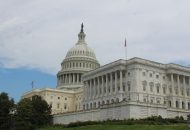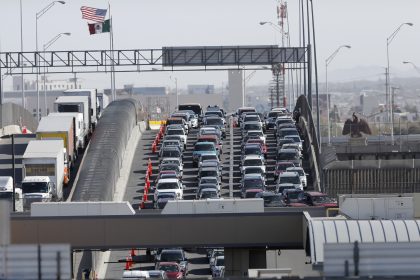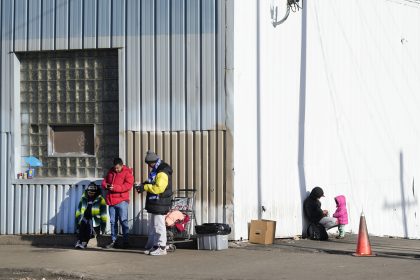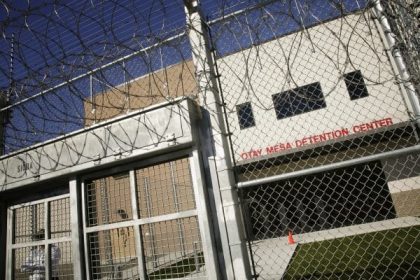Showdown Over DACA Finally Has Its Day Before the Supreme Court
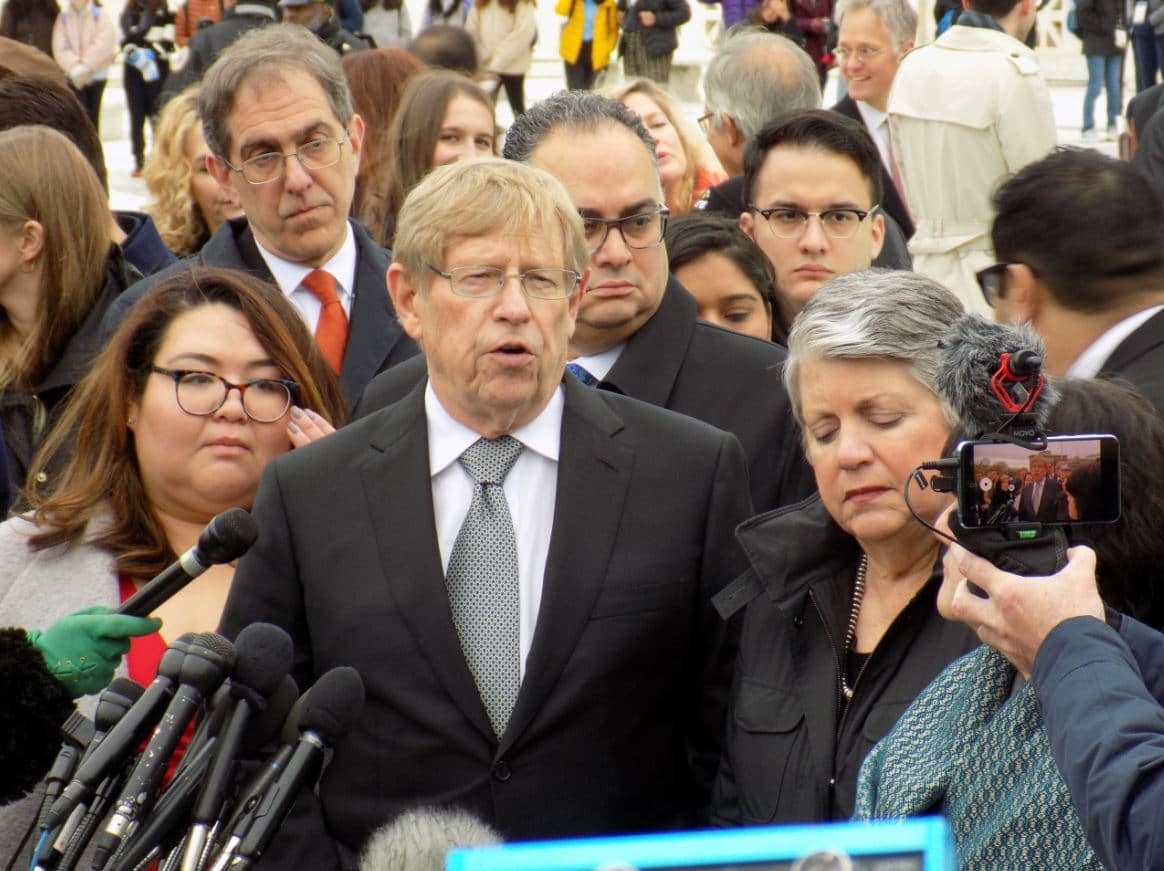
WASHINGTON – A president has every right to undo a predecessor’s policy he disagrees with, but if he does, he must do it the right way, the U.S. Supreme Court was told by immigrant advocates on Tuesday.
That simple contention lay at the heart of one of the most important cases of the current Supreme Court term. The outcome will determine the fate of the Deferred Action for Childhood Arrivals, or DACA program, and the roughly 700,000 young people who participate in it.
It may also very well define the limits of presidential power over immigration, a hot-button issue that has become increasingly divisive since President Donald Trump took office in January 2017.
“You can’t make a mistake on the field and simply move the goalposts to make it okay,” said California Attorney General Xavier Becerra as he stood outside the Supreme Court building after the hearing.
Only feet away, hundreds of DACA supporters and beneficiaries loudly chanted and waved signs despite intermittent cold rain and strong chilly winds that turned the gray morning raw.
Inside the Supreme Court chamber, former solicitor general Theodore Olson stressed that he respects executive power as he argued on behalf of DACA participants, also known as Dreamers.
“However in this case,” he said, “the government utterly failed to explain the rationale behind its decision for rescinding the program, a decision that will adversely affect not only the DACA participants, but their families, their employers, and in some cases, even the U.S. military.”
But the conservative attorney, who is perhaps best known for arguing on the winning sides in Bush v. Gore, which decided the 2000 presidential election, and Citizens United v. Federal Election Commission, which expanded the role of corporate money in politics, also conceded under intense questioning from the justices that the Trump administration does have a right to do away with the DACA program if it wants to.
“What we’re saying is it has to be done in an orderly fashion so that citizens can understand what is being done and people whose lives have depended on a governmental policy aren’t swept away arbitrarily and capriciously,” he said.
“That’s what happened here, and why did it happen? Because the Trump administration didn’t want to take responsibility for its actions,” he said.
President Barack Obama created the DACA program by executive order in 2012 after Congress balked at passing the Dream Act, which would have granted young immigrants who illegally entered the country with their parents both legal status and an eventual pathway to citizenship.
DACA was designed to provide temporary deferral from deportation for young people who meet certain specified criteria. To be eligible for DACA status, applicants had to show that they had arrived in the United States before they turned 16 and were no older than 30, had lived in the United States for at least the previous five years, were a high school graduate or a veteran, and had committed no serious crimes.
The protected status lasts for two years, allowing recipients to work legally and is renewable, but significantly, it does not provide a path to citizenship.
At the time, administration attorneys argued Obama’s action was legal because they relied on the government’s authority to use discretion in deciding whether to pursue deportation against individual immigrants.
But the incoming Trump administration disagreed and cancelled the program in September 2017, arguing it was an unlawful exercise of power by the executive branch.
To bolster its case, the Trump White House pointed to a ruling by the 5th U.S. Circuit Court of Appeals that effectively barred a later, related program, called the Deferred Action for Parents of Americans and Lawful Permanent Residents.
DAPA, as it was called, would have bestowed deferred action status on a class comprised of parents of U.S. citizens who were not legally in the country themselves. Before it took effect, however, Texas and several other states challenged its legality.
A federal district court granted a nationwide preliminary injunction halting the program, which was affirmed by the 5th Circuit. The U.S. Supreme Court took up the case, but deadlocked 4-4 after the death of Justice Antonin Scalia, allowing the injunction to stand.
The Trump administration later rescinded the DAPA program, before the courts could weigh in on the merits of the cases. But when it moved on to DACA, in Olsen’s telling, it suddenly lost its nerve.
Olsen based this assertion on events that are reported to have transpired at the White House in early September 2017, days before then-Attorney General Jeff Sessions announced that DACA was ending.
According to The New York Times and other news outlets, at the 11th hour, after the decision to end DACA had been made, the then-acting Secretary of Homeland Security, Elaine Duke refused to issue a memo explaining exactly why the program was being ended.
When she finally relented, she kept the document simple, refusing to cite lengthy or even very specific policy objections.
Duke, who volunteered with an immigrant aid group when she wasn’t working said only that the attorney general had deemed the program illegal.
Since then, judges in lower courts have repeatedly ruled that by citing only a flawed legal rationale for ending DACA, and with no policy justifications the administration’s decision was “arbitrary and capricious.”
Justices Stephen Breyer and Sonia Sotomayor seemed particularly troubled by the cursory nature of the memo.
“What you have here is an administration saying, ‘We’re giving them six months to prepare before DHS destroys their lives,'” said Sotomayor. “Where is the clarity over whether this was a legal choice or a policy choice?”
For his part, Breyer spoke of the collateral consequences of rescinding DACA, citing hundreds of documents that have been filed in the case from employers, healthcare providers, schools, religious organizations, and labor unions among others.
One federal judge, U.S. District Judge John Bates, presiding on a case here in Washington, did give the administration a second opportunity to justify the rescission.
Then-Homeland Security Secretary Kirstjen Nielsen responded with a three-page memorandum that mostly relied on the earlier rationales in the Duke memo, but added one more: “It is critically important for DHS to project a message that leaves no doubt regarding the clear, consistent, and transparent enforcement of the immigration laws against all classes and categories of aliens,” she wrote.
Olson and San Francisco Solicitor General Michael Mongan, who also argued in favor of preserving DACA, said the justices should give more weight to Duke’s memo because it was issued at the time of the administration’s decision.
The Nielsen memorandum, they said, is little more than a rationalization, premised on the administration’s still unproven assertion that DACA was illegal the moment it was created.
U.S. Solicitor General Noel Francisco, representing the administration, vociferously disagreed.
“Nielsen’s memorandum explains several appropriate reasons for ending the program,” he said.
But Olson stood firm, saying that by relying on the premise that the program was illegally created by President Obama, the Trump administration was trying to avoid any potential blow back for ending it.
“What if,” Olson said, “the administration was forced to justify its ending DACA for reasons other than the programs legality?”
He went on to suggest, both in the courtroom and outside during the press conference, that if the White House was forced to justify its position on those grounds, it would rethink its decision altogether.
He based this assertion on conflicting statements made by the president himself. At one point, he called on Congress to provide an eventual path to citizenship for the Dreamers. At another, he offered to extend DACA in exchange for House concessions on funding the border wall he wants between the U.S. and Mexico.
“Up to now, they haven’t had to own the decision,” Olson said. “It’s an open question what will happen when they do.”
The justices are not expected to hand down a ruling in the case until late June, but it appeared on Tuesday that the Supreme Court’s conservative majority is ready to side with the administration’s efforts to shut down the program.
A ruling upholding the Trump administration’s decision to end the program will not result in the immediate deportation of the Dreamers.
The government will still have to decide how to prioritize deportation, using the immigration-enforcement resources allocated by Congress.
What such a ruling would do would be to more directly threaten deportation by removing a substantial protection for these individuals. Critically, it would also revoke work authorization and other federal benefits for DACA recipients.









